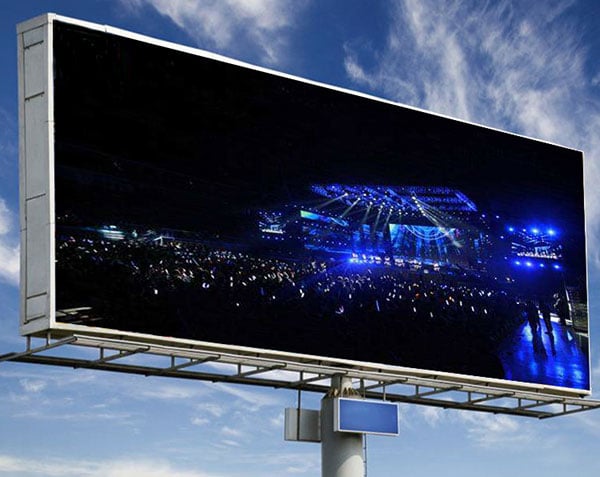Transparent displays like SMD display, a technological marvel, are becoming more widely accessible and cheap each year. If you are unsure whether to spend on them, here are some of the benefits and applications that they offer to outdoor advertising that are highlighted below to give insight on the ever-growing ability of transparent displays that may actually influence you in their path!
The first thing to understand is that not all transparent displays are the same. It is critical to determine which type of transparent display best meets your requirements. Some are better than others in certain situations. This blog begins by discussing two of the most important types.
1. The advantages and disadvantages of transparent LCD displays
Transparent LCD displays, like standard LCD displays, require light at the end of the board to generate a visual image. The dots on an LCD screen do not emit light, but rather depend on the backlight to use it, which is then blocked out to display suitable colors. This makes them ideal for use in well-lit areas, particularly in the open.
Talking about the flaws, transparent digital screens aren’t the best at producing pure black color because they require a backlight to produce images. Furthermore, their brightness is limited, and the viewing angle can impact color vibrancy and image quality.
2. The advantages and disadvantages of transparent OLED displays
In contrast to LCD displays, which block light, each pixel in an OLED display emits its own light. Because OLED displays do not require backlight illumination, they are particularly effective in low-light environments and indoors. Colors remain vibrant from all viewing angles, which is one of the many advantages of OLEDs. The lack of physical backlights in the display allows for thinner and lighter displays.
OLED displays, on the other hand, are more prone to humidity and hyperpigmentation when subjected to direct sun rays, causing them an unsuitable preference for outdoor use. In addition, they are more costly to produce than SMD displays. However, keep in mind that OLED displays are likely to become more affordable in the future. If you aren’t ready to invest in them yet, keep a watch on them!
3. Transparent displays can be interactive.
You might assume that a transparent display of any kind is limited by the availability of functionalities, but remember that interactivity is not at all difficult. If your needs require it, it is highly recommended that you implement interactivity with transparent displays. Even though a transparent display is not a novel technology, it is very likely to entice people to interact with it.
The COVID-19 pandemic provided a good example of the potential for interactivity. As clear physical barriers become more prevalent, more possibilities for transparent displays emerge. Even without interactivity, a transparent display can fill in that uncomfortable boundary and make it appear more like a lavish comfort rather than just another realization of the pandemic.
4. Transparent displays continue to be appealing.
Even though they’ve been around for a while, transparent displays haven’t yet reached their peak of popularity. The beauty of this for anyone who gets them now is that they still draw more attention and exuberance.
Transparent LCD displays are ideal for highlighting products on display behind them, enticing viewers to take a deeper look. Position them in the marketplace, for example, to highlight specific features of certain product lines.
You can rely on transparent digital screens as powerful tools for conveying a message to your audience in a stylish and aesthetically striking manner. Their stand-alone, no-backlight appearance exudes an innovative vibe. They can be effective as a visual component in more opulent industries such as retail, hospitality, and beauty.

